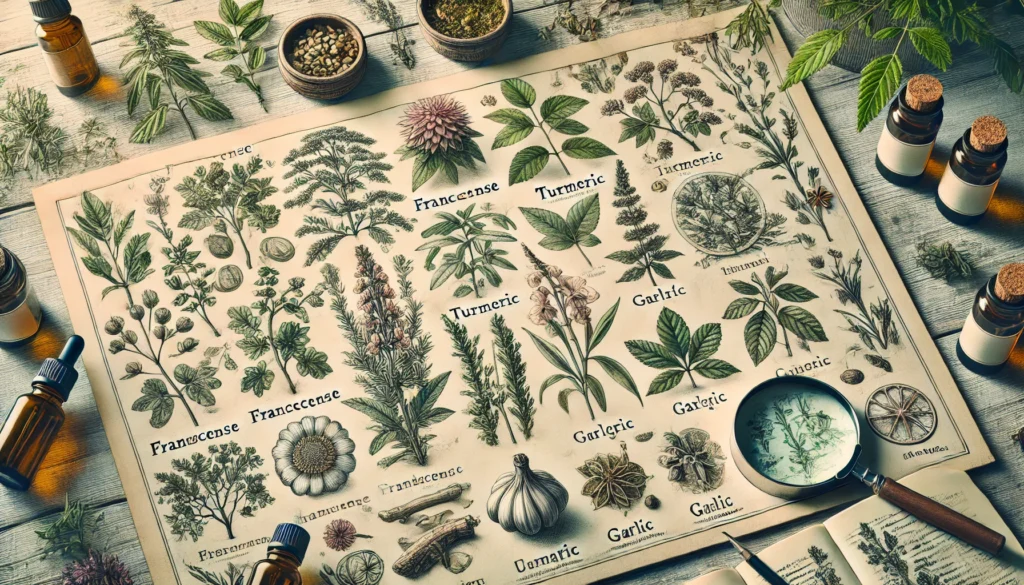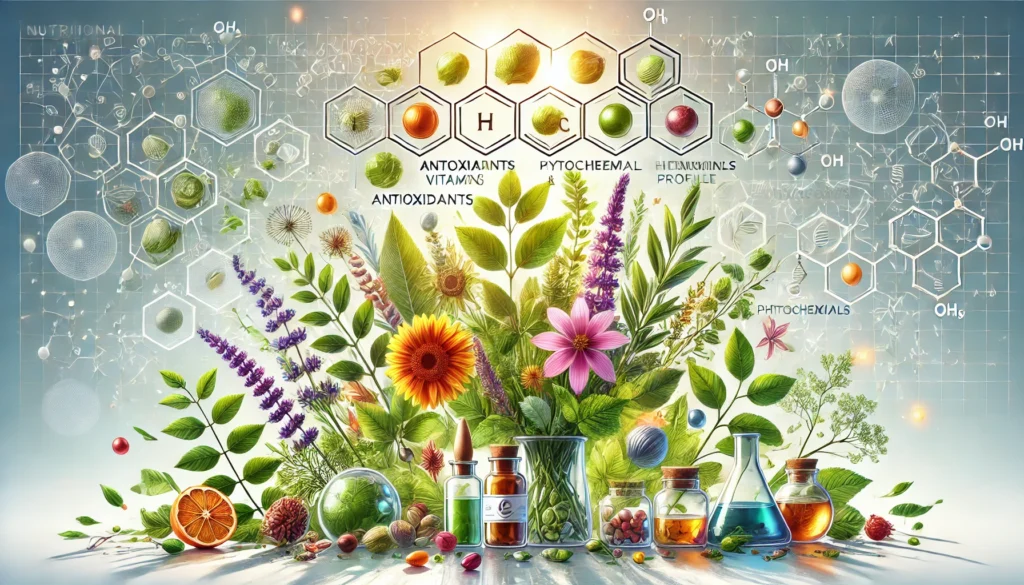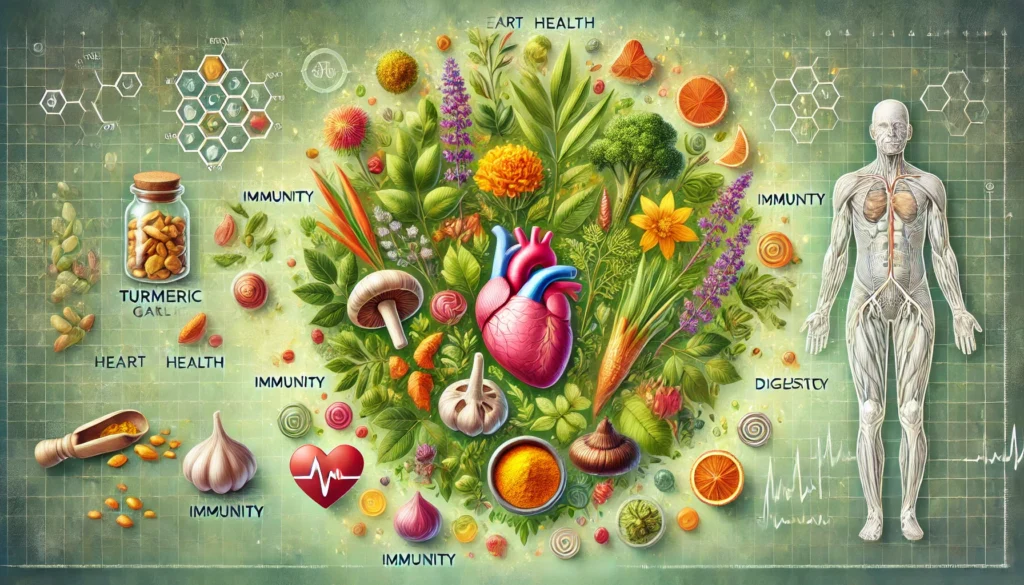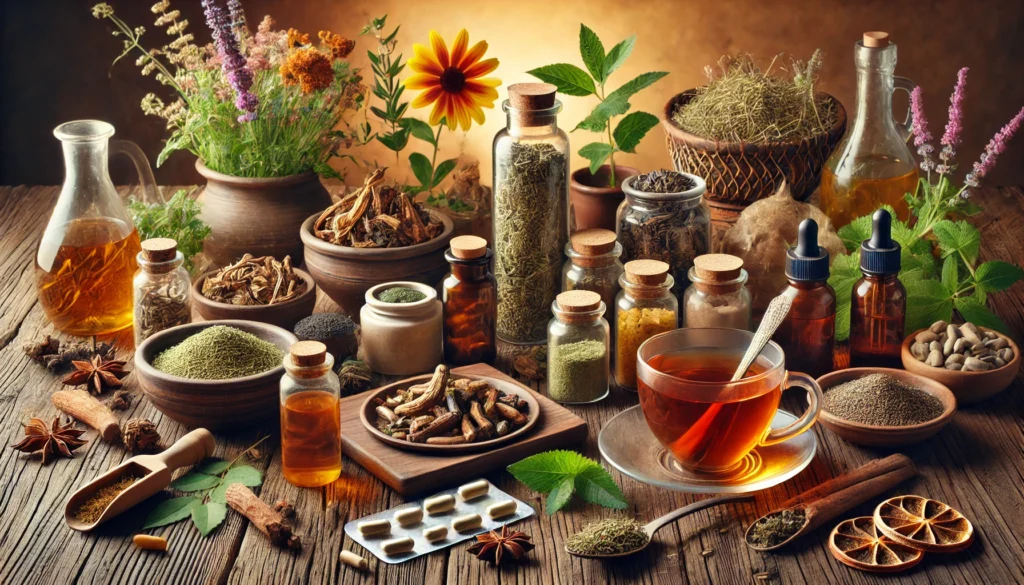Table of Contents
Aloe Vera: A Timeless Remedy for Skin, Digestion, and Overall Wellness
Aloe vera is a plant revered for its numerous health and medicinal benefits, a natural remedy used for thousands of years. Known for its soothing properties, especially when it comes to skin health, aloe vera is much more than just a go-to for sunburn relief. In this detailed exploration of aloe vera, we’ll uncover its historical significance, botanical profile, nutritional and phytochemical richness, its impressive health benefits, and the various methods by which you can incorporate this healing plant into your daily routine.
This site contains affiliate links, and I may receive a commission on purchases made through them. Please see our Affiliate Disclosure for more details.

Historical Significance
Ancient Use
Aloe vera’s long-standing presence in the world of herbal medicine is a testament to its effectiveness. Historical records show that this plant has been used for over 6,000 years, dating back to ancient Egypt, where it was referred to as the “plant of immortality.” The Egyptians used aloe vera not only for cosmetic purposes but also for its healing properties, applying it to wounds, burns, and rashes. Cleopatra herself was rumored to have used aloe in her daily beauty regimen to maintain her glowing skin.
Aloe vera holds a significant place not only in historical medicine but also in biblical texts, highlighting its revered status across cultures and time. In the Bible, aloe is mentioned as a fragrant and precious substance, symbolizing healing and anointing. For instance, it is referenced in Psalm 45-8 and Proverbs 7-17, often associated with spices and perfumes. Most notably, aloe was used in the burial preparations of Jesus, as described in John 19-39 and 40, where Nicodemus brought a mixture of myrrh and aloes to wrap His body—underscoring its sacred and restorative symbolism.
Cultural Significance
Beyond the biblical context, aloe vera also appears in Greek, Roman, Indian, and Chinese traditions, each culture utilizing its healing properties. The Greeks recommended aloe for wounds and hair loss, while the Romans used it extensively as a topical salve for soldiers after battle. In Ayurvedic and Chinese medicine, aloe’s cooling and soothing properties were valued for treating burns, inflammation, and digestive issues. Traditional African medicine employed it to heal skin infections and wounds, and in Mediterranean and Arabian regions, aloe was celebrated as a “cure-all” included in herbal remedies for a variety of ailments.
Its biblical mentions, coupled with its widespread use in ancient healing practices, highlight aloe vera’s enduring legacy as a plant of both spiritual and medicinal significance.
Trade and Spread
As trade routes expanded across Africa, Asia, and eventually the Americas, aloe vera found its way into different regions and cultures. During the colonial period, aloe vera spread throughout the Americas, where indigenous tribes quickly adopted its use for burns, skin conditions, and internal health. Today, aloe vera is a global commodity, cultivated in many parts of the world for medicinal, cosmetic, and food products.

Botanical Profile
Plant Overview
Aloe vera, scientifically known as Aloe barbadensis miller, is a succulent plant that belongs to the Liliaceae family. The plant has thick, fleshy, green to gray-green leaves that are filled with a clear, gel-like substance. These leaves grow from a central base in a rosette pattern, and the plant can grow up to 2 to 3 feet tall. The outer leaf is protected by a waxy cuticle that reduces water loss, making it highly adaptable to desert environments.
Inside the leaves is the gel that aloe is famous for—rich in water, vitamins, minerals, and bioactive compounds. This gel is harvested for its many uses in skin care, medicinal products, and even as a dietary supplement.
Growing Conditions
Aloe vera thrives in hot, arid climates and can be found naturally in desert regions. It requires well-drained, sandy soil and plenty of sunlight to flourish. Aloe plants are drought-tolerant, as their thick leaves store water, allowing them to survive in dry conditions. However, they can also be grown indoors in pots, making them a popular houseplant. Aloe vera plants are easy to care for and require minimal water, only needing to be watered every few weeks when the soil becomes dry.
Types of Aloe Vera
There are over 500 species of aloe, but Aloe barbadensis miller is the most commonly used for medicinal and cosmetic purposes. Other varieties, such as Aloe arborescens and Aloe ferox, are also used in herbal medicine, although they are less common. Aloe arborescens, for example, is known for its stronger medicinal properties and is used more frequently in traditional African medicine.

Nutritional and Phytochemical Profile
Nutritional Components
Aloe vera is not just a topical remedy; it also has a range of internal health benefits due to its rich nutritional content. The gel inside aloe leaves contains:
- Vitamins: Aloe vera is high in vitamins A, C, and E, which are powerful antioxidants that protect the body from free radical damage. It also contains vitamin B12, which supports red blood cell production.
- Minerals: Aloe vera provides essential minerals such as calcium, magnesium, zinc, and potassium, which support various bodily functions, from bone health to muscle function.
- Amino Acids: Aloe vera contains 20 of the 22 essential amino acids required by the body, helping to support tissue repair and enzyme production.
Phytochemicals
Aloe vera’s medicinal potency is due in large part to its rich phytochemical content. Some of the key bioactive compounds found in aloe vera include:
- Aloe-emodin: A compound with laxative effects, often used to treat constipation and digestive discomfort.
- Anthraquinones: These compounds have antibacterial and antiviral properties, making aloe useful in fighting infections.
- Polysaccharides: These long-chain sugars found in aloe vera contribute to its immune-boosting and anti-inflammatory effects, and they help the body retain moisture.
Other Active Compounds
Aloe vera contains additional compounds, such as mucopolysaccharides and enzymes like bradykinase, which help reduce inflammation when applied to the skin. Its antioxidant content also contributes to cellular repair and protection against oxidative stress.

Health Benefits of Aloe Vera
Aloe vera’s impressive range of health benefits spans from topical applications to internal wellness. Here are some of the most widely recognized health benefits of aloe vera, supported by scientific research.
Skin Health
One of aloe vera’s most well-known uses is in treating skin issues, particularly burns, wounds, and inflammation. The cooling gel of aloe soothes the skin, reducing redness and pain associated with sunburns and other minor burns. Research shows that aloe vera speeds up wound healing by promoting collagen production and increasing blood circulation in the affected area.
Aloe is also effective in treating acne and other skin conditions, thanks to its anti-inflammatory and antibacterial properties. It helps reduce redness, swelling, and bacteria buildup, making it a common ingredient in skincare products.
Digestive Health
Aloe vera has been used traditionally to treat various digestive issues, including indigestion, acid reflux, and constipation. Aloe’s anthraquinones have a natural laxative effect, helping to stimulate bowel movements. Aloe vera juice, in particular, has gained popularity as a digestive aid, helping to soothe the lining of the digestive tract and reduce irritation caused by acid reflux or irritable bowel syndrome (IBS).
Some studies suggest that aloe vera can also help repair the intestinal lining, making it beneficial for people suffering from ulcers or other inflammatory conditions of the gastrointestinal tract.
Hydration and Detoxification
Due to its high water content, aloe vera is incredibly hydrating, making it beneficial for both the skin and the body when consumed internally. Aloe vera juice is often used in detoxification regimens, helping to flush out toxins and support kidney and liver health. The polysaccharides in aloe vera aid in the body’s natural detox process by supporting the liver’s ability to process and eliminate toxins.
Immune System Support
Aloe vera’s rich supply of vitamins, minerals, and antioxidants makes it a powerful immune booster. The polysaccharides in aloe have been shown to stimulate macrophages—white blood cells responsible for fighting off infections. Regular consumption of aloe vera juice can help enhance the body’s natural defenses against illness.
Anti-inflammatory and Pain Relief
Aloe vera’s anti-inflammatory properties make it a valuable natural remedy for reducing pain and inflammation. It can be applied topically to soothe sore muscles, joint pain, or inflammatory skin conditions like eczema and psoriasis. Internally, aloe vera’s anti-inflammatory compounds can help reduce inflammation in the digestive system, making it beneficial for people with inflammatory bowel disease (IBD) or other digestive disorders.
Antioxidant Properties
The antioxidants found in aloe vera, particularly vitamins A, C, and E, play a key role in protecting cells from damage caused by free radicals. Free radicals are unstable molecules that can cause oxidative stress, leading to premature aging and chronic diseases such as cancer and heart disease. By neutralizing these harmful molecules, aloe vera helps promote healthy aging and supports cellular repair.
Antibacterial and Antifungal
Aloe vera contains several compounds, such as anthraquinones and saponins, that have antibacterial and antifungal properties. Aloe vera can be applied to the skin to treat fungal infections like athlete’s foot, and it is also effective in preventing bacterial infections in cuts, scrapes, and burns.
Cardiovascular Support
Research has shown that aloe vera may be beneficial for cardiovascular health. Some studies suggest that aloe vera can help lower cholesterol levels, reduce blood pressure, and improve circulation. Aloe’s polysaccharides support the health of the blood vessels, reducing the risk of plaque buildup that can lead to heart disease.
Diabetes Management
Aloe vera has gained attention for its potential to help manage blood sugar levels in people with type 2 diabetes. Studies suggest that aloe vera can improve insulin sensitivity, helping to regulate blood sugar levels and reduce the risk of diabetic complications. Consuming aloe vera juice regularly may offer a natural way to support blood sugar control.
Oral Health
Aloe vera is also beneficial for oral health. Its anti-inflammatory
and antibacterial properties make it effective in treating gum inflammation, reducing plaque buildup, and speeding up the healing of mouth ulcers. Aloe vera is often included in natural toothpaste and mouthwash formulas to help promote fresh breath and prevent oral infections.

Methods of Consumption
Aloe vera can be used in several different forms, depending on your health goals and preferences. Here’s a breakdown of the most common methods of consuming and using aloe vera.
Aloe Vera Gel
The most well-known use of aloe vera is applying the gel topically to the skin. Aloe vera gel can be extracted directly from the plant or purchased in commercial products. It’s a soothing remedy for burns, sunburns, cuts, and dry skin. Aloe vera gel is also commonly used in cosmetic products such as moisturizers, lotions, and face masks for its hydrating and anti-inflammatory effects.
Aloe Vera Juice
Aloe vera juice is made from the gel inside the leaves and is consumed as a health tonic. It can help with digestion, hydration, and detoxification. Aloe vera juice is available in most health food stores and is often sold in flavored varieties. Drinking a small amount of aloe vera juice daily can support digestive health and help maintain a healthy gut.
Aloe Vera Capsules
For those who want to avoid the taste of aloe vera juice, capsules offer a convenient alternative. Aloe vera supplements come in powdered or encapsulated form, delivering a concentrated dose of aloe’s beneficial compounds. Capsules are commonly taken to support digestive health, reduce inflammation, and boost the immune system.
Aloe Vera Oil
Aloe vera oil is made by infusing aloe vera gel with a carrier oil, such as coconut or jojoba oil. This oil can be used for various beauty and health purposes, including hair care, scalp treatment, and moisturizing the skin. Aloe vera oil is also used as a massage oil to soothe sore muscles and reduce inflammation.
Aloe Vera Creams and Lotions
Aloe vera is a key ingredient in many commercial skincare products, such as creams, lotions, and sunscreens. These products are formulated to hydrate and heal the skin, making them ideal for people with dry or sensitive skin. Aloe vera creams are also used to treat skin conditions like eczema, psoriasis, and dermatitis.
Aloe Vera in Cooking
Aloe vera is becoming increasingly popular as an ingredient in health foods, smoothies, and detox drinks. The inner gel of the aloe leaf can be blended into smoothies or juices for a nutritional boost. Aloe vera is also used in some traditional cooking, particularly in Asian and African cuisines, where it is added to soups, stews, and beverages for its health benefits.
Aloe Vera Powder
Aloe vera powder is a versatile form of the plant that can be used in smoothies, drinks, or taken as a supplement. Aloe vera powder is made by drying and grinding the leaves, preserving the plant’s beneficial compounds. It can be mixed into water or juice for a convenient way to consume aloe vera.

Cautionary Advice
While aloe vera is generally safe for most people, there are a few precautions to consider before using or consuming aloe vera products.
Potential Side Effects
Aloe vera juice, especially when consumed in large amounts, can cause digestive issues like cramping, diarrhea, or nausea due to its laxative properties. It’s important to start with small doses and gradually increase intake if you are new to aloe vera.
Medication Interactions
Aloe vera may interact with certain medications, particularly those used to control blood sugar levels or blood pressure. Aloe’s blood-thinning properties may also interact with anticoagulant medications. If you are taking any medications, it’s a good idea to consult with a healthcare provider before using aloe vera supplements.
Allergies
Although rare, some individuals may experience allergic reactions to aloe vera, especially when applied topically. Symptoms of an allergic reaction include itching, redness, and swelling. If you have sensitive skin or a history of allergies, do a patch test before using aloe vera products.
Safe Dosage
For most people, consuming 1-2 ounces of aloe vera juice per day is considered safe and effective. When taking aloe vera supplements, follow the dosage recommendations on the product label. Avoid consuming large amounts of aloe vera, as it may lead to digestive discomfort.
Pregnancy and Nursing
Pregnant and nursing women should use caution when consuming aloe vera internally, as its laxative effect could cause uterine contractions or digestive upset. Topical use is generally considered safe, but it’s always best to consult a healthcare provider before using any herbal supplements during pregnancy.

Conclusion
Aloe vera is a plant with an ancient history and a bright future, thanks to its remarkable ability to support skin health, digestion, immune function, and more. Whether you’re applying its soothing gel to a sunburn, sipping on aloe vera juice for digestive support, or using it in your skincare routine, aloe vera offers a natural way to enhance your health. With its wide range of health benefits and easy-to-use forms, aloe vera is a versatile and valuable addition to any health regimen.
So, whether you’re looking to improve your skin, detox your body, or simply boost your immune system, aloe vera has you covered. Try incorporating this powerful plant into your daily routine and experience the many benefits it has to offer.
